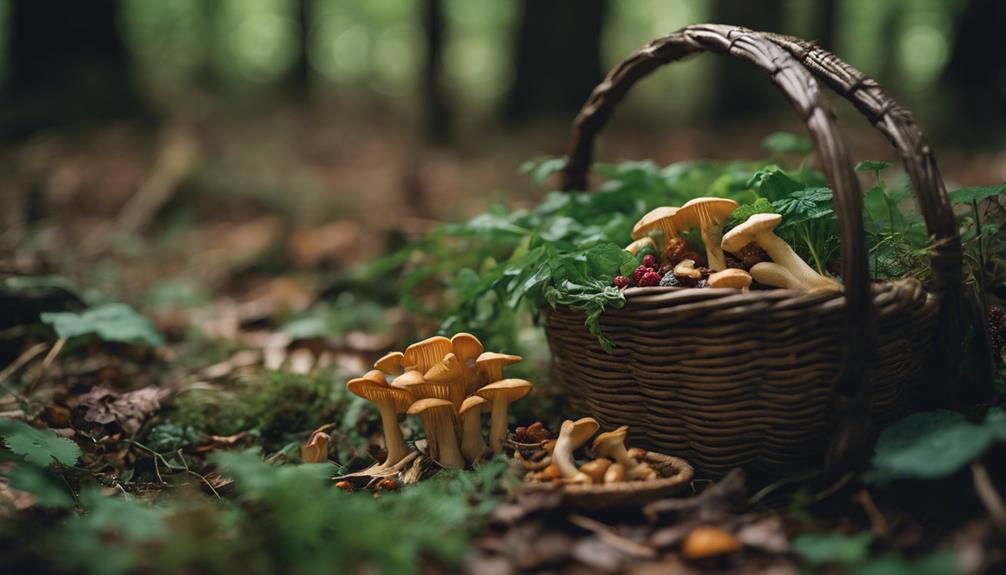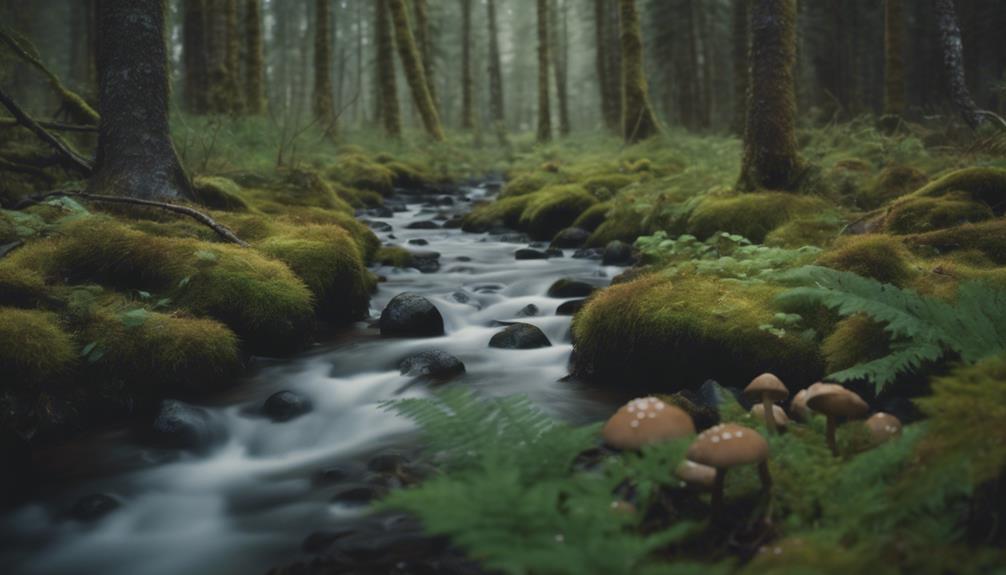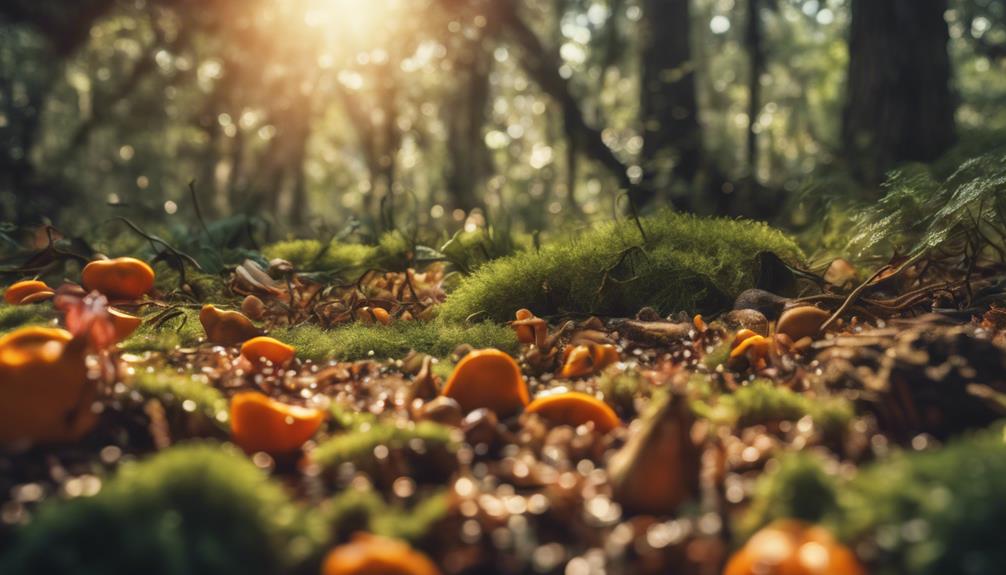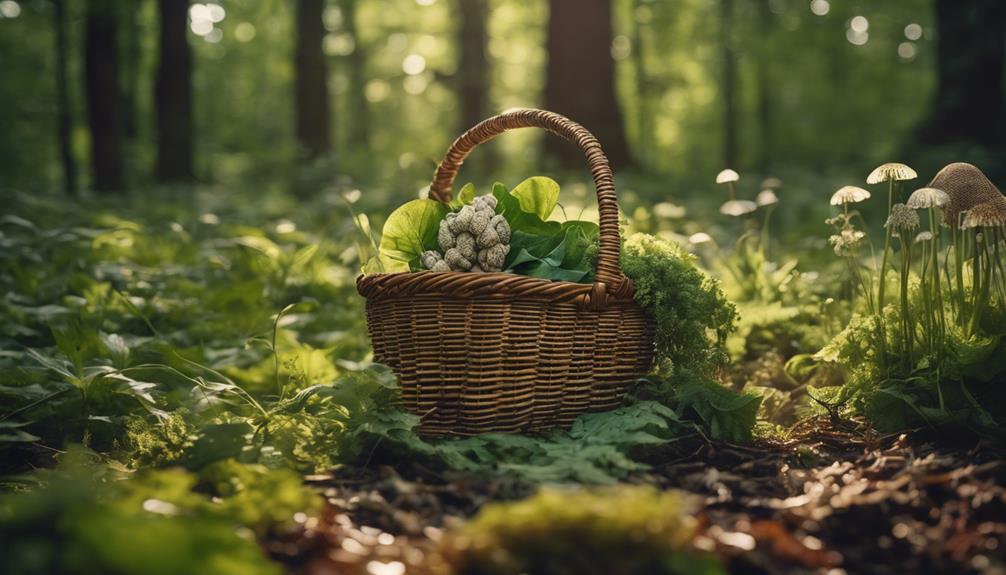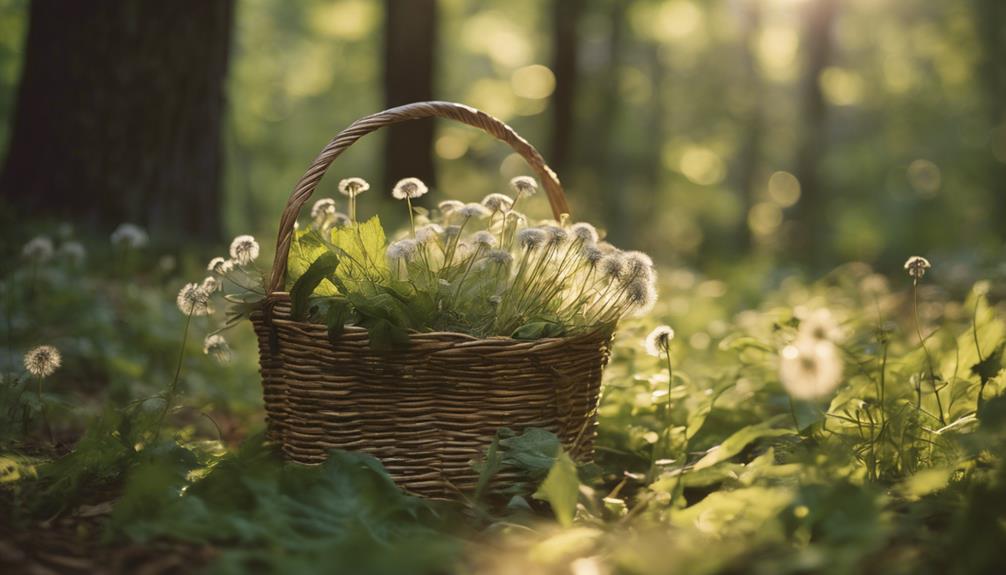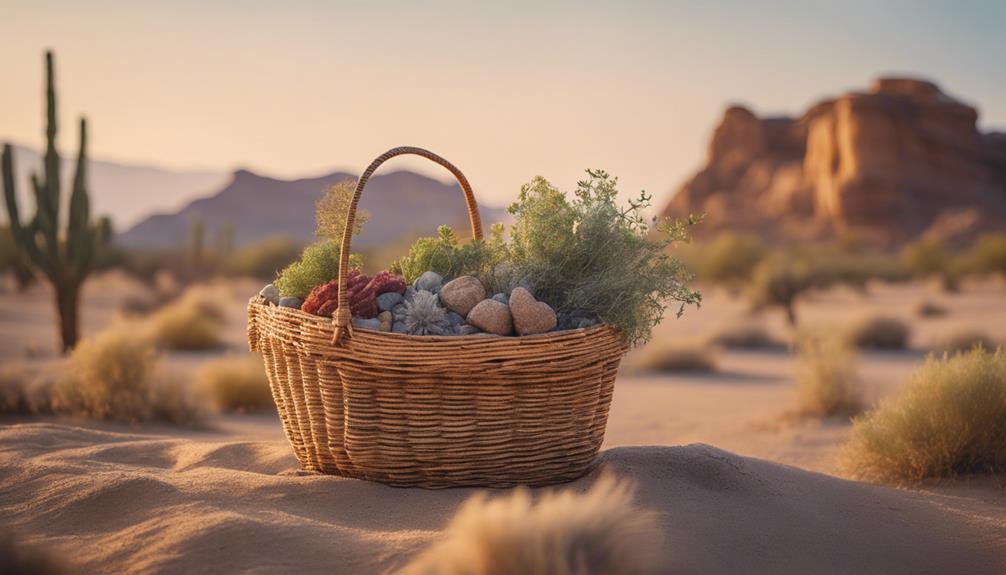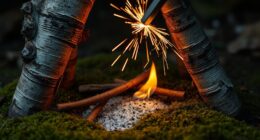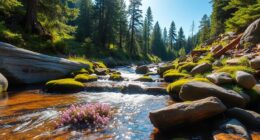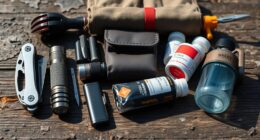You're about to uncover the rich variety of Alabama's wild edibles, from juicy blackberries to nutritious dandelion greens. To forage safely and sustainably, it's important to identify plants confidently, learning from experienced foragers and using field guides. Understand diverse environments, know where to find wild edibles, and follow safety tips. Harvest only what you need, minimize environmental impact, and respect private property. Discover the secrets of identifying wild mushrooms, and explore sustainable practices. Learn from local experts, and connect with like-minded individuals to learn how to forage in Alabama – and get ready to uncover even more exciting possibilities.
Key Takeaways
- To forage safely in Alabama, proper plant identification is crucial to avoid toxic plants like pokeweed.
- Learn from experienced foragers and use field guides to confidently identify wild edibles in Alabama's diverse ecosystems.
- Understand the diverse environments in Alabama, including forests, coastal areas, wetlands, mountains, and urban areas, to find wild edibles.
- Harvest only what you need, minimize environmental impact, and follow local regulations to practice sustainable foraging in Alabama.
- Join local foraging groups, workshops, or the Alabama Mushroom Society to connect with experts and learn about safe and sustainable foraging practices.
Alabama's Wild Edible Delights
As you venture into Alabama's diverse ecosystem, you'll discover a treasure trove of wild edibles waiting to be foraged, from juicy blackberries and blueberries to nutritious pawpaws and dandelion greens.
You'll also find an abundance of wild nuts like pecans and hickory nuts, perfect for snacking or adding to your favorite recipes.
When foraging in Alabama, you'll have the opportunity to forage for a variety of berries, including strawberries and muscadines. However, it's important to remember that proper plant identification is necessary to avoid mistakenly consuming toxic plants like pokeweed.
By taking the time to learn about the different species of wild edibles and how to identify them, you'll be able to enjoy the fruits of your labor (literally!) and experience the thrill of foraging in Alabama.
With a little practice and patience, you'll be able to forage like a pro and enjoy the delicious flavors of the Yellowhammer State's wild edibles.
Foraging Essentials and Safety Tips

As you venture into the world of foraging in Alabama, it's important that you prioritize three essential aspects:
knowing your plants, being aware of locales, and handling with care.
You'll need to develop a keen eye for identifying edible species, avoid areas that may be contaminated, and exercise caution when consuming wild edibles. It’s also important to familiarize yourself with local regulations and obtain any necessary permits before gathering plants or fungi. When foraging wild treats in West Virginia, make sure to respect private property boundaries and natural habitats to ensure the sustainability of these resources for future generations. Always double-check your findings using reliable field guides or consult with experienced foragers to avoid any harmful mistakes.
Know Your Plants
When foraging in Alabama, you must be absolutely confident of a plant's identity before taking a bite, as a single misidentification can be fatal. They're not all edible, and some wild species can be toxic. Before you eat, make sure you're 100% certain of what you've found.
Learning from experienced foragers and experts can help you distinguish between safe and harmful wild edibles. Consulting botanists and using field guides can aid in accurate plant identification during your foraging trips.
Avoid plants found in polluted areas, and follow property regulations to guarantee safe foraging practices. Remember, it's always better to err on the side of caution when foraging in Alabama. Take your time, and don't rush into eating something that might harm you.
Be Aware Locales
You'll need to know where to look for wild edibles in Alabama, which means being aware of local ecosystems and plant habitats. Understanding the diverse environments across the state – from forests to coastal areas – will help you pinpoint the best foraging spots.
| Ecosystem | Plant Habitats | Foraging Tips |
|---|---|---|
| Forests | Rich in wild mushrooms, berries, and herbs | Look for oak, beech, and pine trees |
| Coastal Areas | Abundant with seaweed, shellfish, and beach greens | Be mindful of tidal zones and sea spray |
| Wetlands | Home to aquatic plants, fish, and amphibians | Wear waterproof boots and gloves |
| Mountains | Rich in wild fruits, nuts, and edible flowers | Be aware of steep terrain and changing weather |
| Urban Areas | Look for community gardens, parks, and green spaces | Respect private property and urban pollution |
When foraging in Alabama, remember to follow essential safety tips: avoid areas near roadsides or polluted zones, and respect private property. Consider learning from experienced foragers through workshops or online resources, and always prioritize proper plant identification to avoid toxic plants. With the right knowledge and precautions, you'll be well on your way to a successful foraging adventure in Alabama.
Handle With Care
Properly identifying the wild edibles you find in Alabama is essential, since mistaking a toxic plant like pokeweed for an edible one can have serious consequences. When you're out wild foraging, it's vital to take the necessary precautions to guarantee your safety.
Start by doing your research and learning from experienced foragers. Utilize field guides to help you distinguish safe plants from toxic ones. Consulting with botanists can also provide valuable expert advice on plant identification.
Additionally, make sure to avoid plants growing in polluted areas and comply with property regulations when gathering wild edibles. By following safe foraging techniques and taking the necessary precautions, you'll be able to enjoy the abundance of wild edibles Alabama has to offer.
Identifying Wild Mushrooms in Alabama

When you explore Alabama's forests, it is important to cultivate a keen eye for distinguishing features to ensure you are harvesting edible species and avoiding toxic lookalikes. As a beginner, it's vital to understand that expert identification is necessary when foraging for wild mushrooms in Alabama. Joining local foraging groups or workshops can help you learn to identify and safely harvest wild mushrooms. The Alabama Mushroom Society provides valuable resources and guidance for safely identifying and foraging wild mushrooms in the state.
| Mushroom | Identification Features | Toxic Lookalikes |
|---|---|---|
| Morel | Honeycomb appearance, white to dark brown color | False morel (Gyromitra esculenta) |
| Chanterelle | Fruity, apricot-like aroma, yellow to orange color | Jack o' lantern mushroom (Omphalotus olearius) |
| Oyster Mushroom | Shelf-like growth, white to grayish color | False oyster mushroom (Pleurotus sp.) |
| Black Trumpet | Dark, trumpet-shaped cap, wavy edges | False black trumpet (Craterellus tubaeformis) |
Tips for Sustainable Foraging Practices

As you venture into Alabama's forests, remember that sustainable foraging practices are essential to preserving the delicate balance of ecosystems and guaranteeing a bounty of wild edibles for future generations. When you forage, only harvest what you need, leaving enough for wildlife and future growth. This responsible approach guarantees that the natural habitats remain intact, supporting ecosystem health and biodiversity.
Practicing sustainable foraging also means minimizing your environmental impact. Avoid foraging in protected areas and always follow local regulations. Respect private property rights and obtain permission before harvesting wild edibles. By doing so, you'll promote a balanced relationship with nature, supporting the continued growth of edible plants.
Ethical harvesting is key to maintaining the health of Alabama's ecosystems. As you forage, prioritize sustainable practices to secure that the land remains fertile and abundant for generations to come. By adopting these habits, you'll not only enjoy the thrill of wild eating but also contribute to the preservation of Alabama's natural beauty.
Common Wild Edibles in Alabama

As you start foraging in Alabama, you'll discover a variety of wild edibles waiting to be discovered. From sweet treats like wild fruits and berries to nutritious greens, the state's wilderness offers a wealth of free food.
Let's take a closer look at the common wild edibles you can find in Alabama, including wild fruits, berry picking spots, and an abundance of wild greens.
Wild Fruits of Alabama
In Alabama's diverse ecosystems, you'll find an abundance of common wild edibles, including blackberries, blueberries, pawpaws, dandelions, and muscadine vines. As you venture into the wild, you'll discover a treasure trove of nutritious goodies waiting to be foraged.
Here are just a few reasons why you'll love foraging for wild fruits in Alabama:
- Nutrient-rich berries: Blackberries and blueberries are packed with antioxidants and vitamins, making them a healthy snack.
- Tropical flavors: Pawpaws, with their custard-like texture, will transport you to a tropical paradise.
- Easy to find: These wild fruits are abundant in Alabama's forests and ecosystems, making them easy to forage.
As you explore the great outdoors, remember that foraging for wild fruits in Alabama can provide a tasty and nutritious experience.
Berry Picking Spots
Head into Alabama's woodlands, fields, and along its winding roads, where you'll stumble upon bountiful berry picking spots teeming with common wild edibles waiting to be foraged. As a forager, you'll be thrilled to discover the abundance of wild berries, including blackberries and blueberries, ripe for the picking. But that's not all – Alabama's diverse landscape also yields pawpaws, a tropical-like fruit, during late summer and fall.
| Berry Type | Growing Conditions | Best Time to Forage |
|---|---|---|
| Blackberries | Woodland edges, fields | Summer |
| Blueberries | Acidic soils, moist areas | Summer |
| Pawpaws | Rich soils, woodland edges | Late summer, fall |
Beyond berries, Alabama's landscape is also home to dandelions, whose greens can be harvested for salads or cooked dishes. And let's not forget muscadine vines, which produce delicious grapes perfect for snacking or adding to your favorite recipes. As you explore Alabama's wild eating scene, remember to always follow safe foraging practices and respect the land and its owners. Happy foraging!
Wild Greens Galore
Venture into Alabama's wild and discover a treasure trove of nutritious wild greens, waiting to be foraged and added to your favorite dishes. You'll find an abundance of wild edibles, including dandelions, purslane, chickweed, and lamb's quarters, all packed with vitamins, minerals, and antioxidants. By foraging for these wild greens, you'll not only add flavor and nutrition to your meals but also reduce your grocery bill and minimize your environmental impact.
Here are just a few reasons to get excited about foraging for wild greens in Alabama:
- Unbeatable nutrition: Wild greens are bursting with vitamins, minerals, and antioxidants that will supercharge your meals.
- Sustainable and cost-effective: Foraging is a zero-waste, budget-friendly way to incorporate fresh produce into your diet.
- Endless culinary possibilities: Add wild greens to salads, soups, stir-fries, and more for a flavorful and nutritious boost.
Remember to always identify and clean your finds properly to secure a safe and enjoyable foraging experience.
With a little knowledge and practice, you'll be enjoying Alabama's wild bounty in no time!
Foraging Communities and Resources

You can tap into Alabama's thriving foraging community by connecting with local experts and enthusiasts who share knowledge, resources, and hands-on experience. Joining foraging groups and workshops can help you find and identify wild edibles in Alabama.
The Alabama Mushroom Society, for instance, offers workshops, resources, and guided tours for safe mushroom foraging. By collaborating with experts and learning from experienced foragers, you can enhance your foraging knowledge and safety.
The Alabama Mushroom Society promotes conservation of wild mushrooms and provides educational events for enthusiasts. Utilizing field guides, expert guidance, and resources can guarantee a successful and safe foraging experience in Alabama.
You can tap into these resources to learn about sustainable foraging practices, identify edible species, and connect with like-minded individuals. By doing so, you'll become part of a community that shares your passion for wild eating and conservation.
Frequently Asked Questions
What Is the Golden Rule of Foraging?
You're about to uncover the most essential secret to foraging, the one rule that'll keep you safe from toxic plants. Are you ready? The golden rule of foraging is to be 100% sure of plant identification before taking a single bite!
What Is the Number One Rule of Foraging?
You need to remember that the number one rule of foraging is to be 100% certain of plant identification before consumption, ensuring you avoid toxic or harmful plants and enjoy safe, wild eating experiences.
How Do Beginners Do Forage?
You begin foraging by learning from pros, attending workshops, and mastering plant ID to avoid poisonous lookalikes; then, you immerse yourself in easy-to-spot wild edibles like blackberries and dandelions, and join group forays to learn from others.
How to Forage for Food in the Wild?
You'll start foraging for food in the wild by learning to identify common edibles, taking precautions to avoid toxic plants, and exploring different habitats like woods and fields to find a variety of wild edibles.
Conclusion
You've now discovered the secrets to wild eating in Alabama!
Did you know that the state is home to over 1,500 species of wild plants, many of which are edible?
As you begin your foraging journey, remember to prioritize sustainability and safety.
Happy foraging, and don't forget to respect the land and its bounty!

